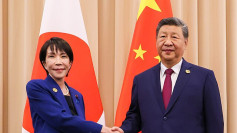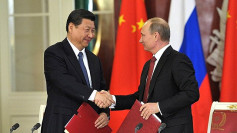China's trade surplus is on track to reach nearly $1 trillion this year, positioning it for a record milestone even as it faces mounting pressure from major global economies. The widening gap between Chinese exports and imports, which reached $785 billion in the first 10 months of 2024, marks a 16% increase from the previous year, according to recently released data. This lopsided trade balance is likely to escalate tensions with international trade partners and provoke retaliatory actions, especially from President-elect Donald Trump, who has signaled a renewed focus on addressing trade imbalances.
The trade surplus growth comes amid China's continued reliance on exports to prop up its sluggish domestic economy, which has been struggling with weak consumer demand, a real estate crisis, and deflationary pressures. "With Chinese export prices still falling, export volume growth was enormous," noted Brad Setser, a senior fellow at the Council on Foreign Relations, in a recent post on X (formerly Twitter). The data highlights an economy leaning heavily on its export engine, creating friction with countries seeking to curb China's trade dominance.
The response from other nations has been swift, with countries from South America to Europe erecting tariff barriers against Chinese goods, such as steel and electric vehicles. Trump's incoming administration has hinted at imposing new tariffs aimed at limiting the influx of Chinese products into the U.S., further straining the already delicate trade relationship. The U.S. remains one of China's largest trading partners, with the trade surplus between the two nations rising 4.4% this year.
Amid this escalating tension, China's internal economic indicators reflect both growth and vulnerability. The General Administration of Customs reported a 6.7% increase in exports year-on-year during the first 10 months of 2024, amounting to RMB 20.8 trillion, while imports grew by just 3.2%, reaching RMB 15.22 trillion. The imbalance has sparked concerns among foreign investors, leading to a drop in foreign direct investment (FDI) liabilities in China. If the decline continues, 2024 could mark the first annual net outflow of FDI since comparable data began in 1990.
China's trade relationships with the Association of Southeast Asian Nations (ASEAN), the European Union, and other regions have also shown significant increases. Trade with ASEAN nations grew by 8.8% to RMB 5.67 trillion, while trade with the European Union rose by 9.6%. However, these imbalances have led to accusations of unfair trade practices, with Beijing facing growing scrutiny over its economic strategies.
To counteract slowing domestic demand and support businesses, Beijing has announced measures to stabilize foreign trade growth, foster economic development, and promote employment. The state council has pledged to increase financial support for industries struggling with slowing consumer demand. Despite these efforts, Chinese companies continue to boost export performance, further widening the trade surplus. This has come at a time when the demand for imports is stifled by economic uncertainties, rising electrification, and a shift toward domestic alternatives.
The trade surplus calculated in yuan terms has reached 5.2% of nominal gross domestic product (GDP) in the first nine months of this year, the highest level since 2015. China now exports more goods to nearly 170 countries and economies than it imports from them, exacerbating trade imbalances across the globe.
Currency tensions are also brewing, with countries like India warning of possible retaliatory moves if China devalues the yuan further to counter potential U.S. tariffs. India's trade deficit with China stands at $85 billion this year, reflecting a 3% increase from 2023.





